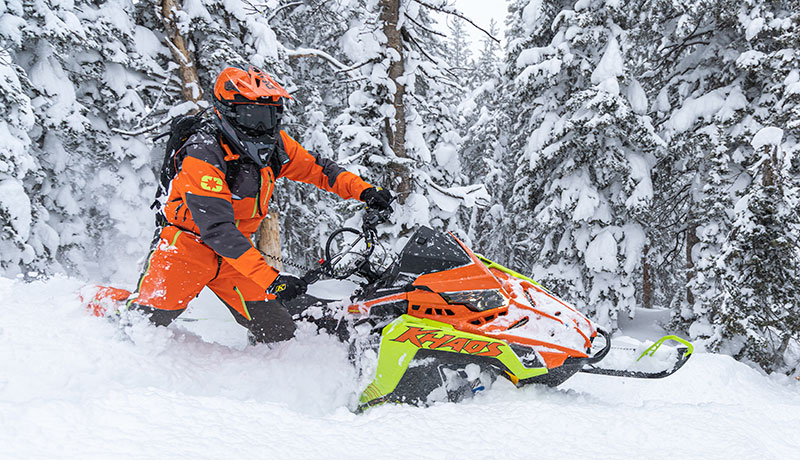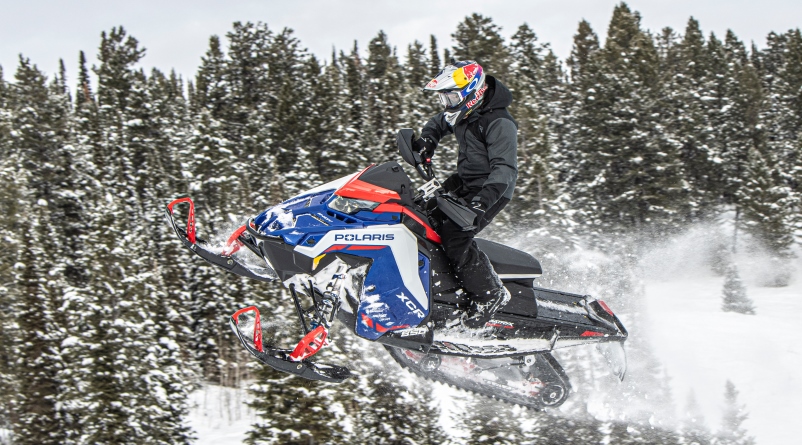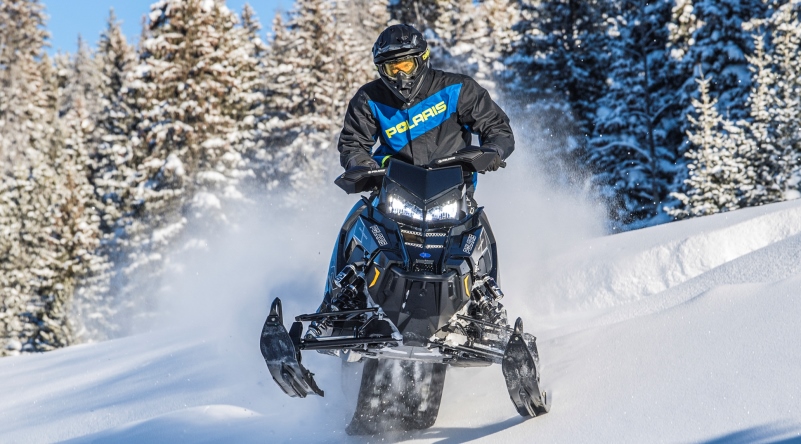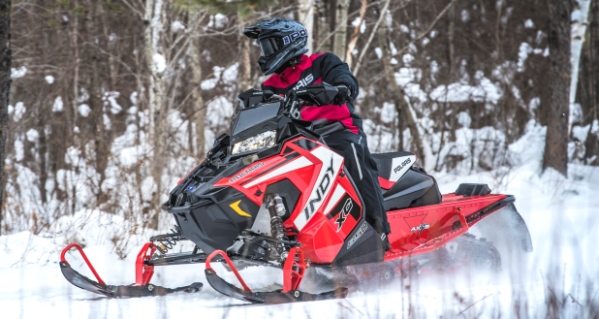 After being a frontrunner in the class since, seemingly, Christ was a child, Polaris competitiveness slipped away as it sat idle while other brands brought out new engines and chassis.
After being a frontrunner in the class since, seemingly, Christ was a child, Polaris competitiveness slipped away as it sat idle while other brands brought out new engines and chassis.
Wilfahrt said highperformance riders want acceleration, top speed, good handling and ride quality, comfortable ergonomics and the image to go with it. Judging by the criteria, the Polaris 600 HO Fusion delivers the goods to aggressive riders.
Our Fusion earned itself the nickname “Grave Digger” during a trail ride last January near Two Harbors, Minnesota, with several of Polaris marketing guys.
No, we didn’t use it to help conceal a body deep in the northwoods. The sled earned its nickname because its steering was heavy as a house.
The machine had 120 studs and a set of 7.5-inch aftermarket carbides. That traction setup combined with the machine’s already-heavy steering characteristics caused it to become more than the average man could handle. (The guys from Polaris must be average because they whined the most.)
After that ride, we replaced the carbides with a 6-inch set and bent up the rear end about .5 inch to reduce tail pressure. This setup reduced steering effort significantly.
Since its introduction, we’ve said the IQ chassis is unmatched in terms of stability and control through choppy moguls and big bumps. Our 600 Fusion felt solid and tight through moguled, off-camber turns that made some other machines feel loose and unsettled.
It performed well in most conditions for most riders. But suspension calibrations were too soft for some riders; the front track shock bottomed more often than the others.
The Liberty 600 HO engine was a good, consistent runner that had good power from down low to wide-open. Radar runs under controlled circumstances showed its top speed was about 104 mph on a hard-packed, laketop chute. The power supply was wide and strong, which made the sled a blast to shoot down a ditchline or from corner to corner in the woods.
Though the sled ran well while underway, the carbs were jetted too rich, especially down low. The engine loaded up if idled for more than about 10 seconds. Idle and driveaway performance could be improved with a leaner fuel screw setting or larger pilot air jet. Startup would improve, too.
One of the most distinguishing trademarks of the sled was its nuclear-hot, right footwell. After a few miles of hard running, the area would become so hot that drivers usually had to hang their foot in the breeze to help it cool off. We installed a vent kit from Starting Line Products to help alleviate that condition. (See the Product Test story on page 68.)
Polaris made a host of improvements to the Fusion’s IQ chassis for 2006; one of those changes was the lowered jackshaft to improve belt life. The changes improved our luck with the drivetrain. We tacked 2,400 miles on our 600 HO Fusion and never snapped a belt. For comparison, we broke three belts on our 2005 900 Fusion in about 2,000 miles.
The narrow seat had firm support for aggressive riders and the hood, windshield and cowling offered good protection from the elements. Nobody registered complaints of getting cold while on board.
Heavy steering, hot feet and mis-calibrated carburetors are strikes against our 600 HO Fusion. Despite those faults, it was a strong-running, well-riding and sharp-handling sled that delivered consistent, reliable performance every time the recoil rope was pulled. Those are the characteristics that really matter to hard-core sledders. And they’re the traits that Polaris heritage is built upon.






